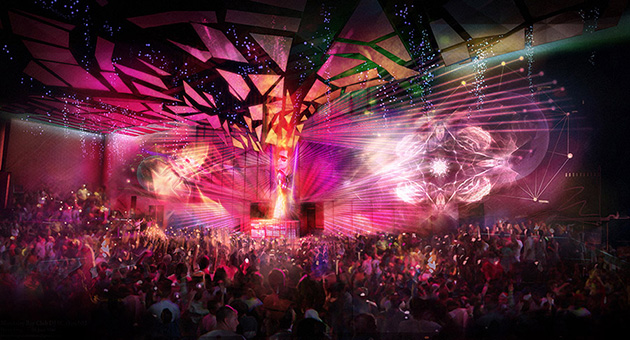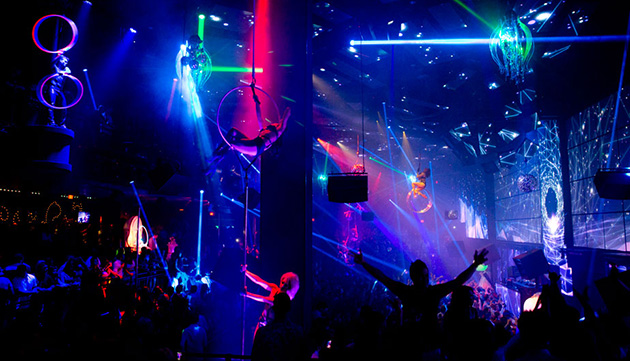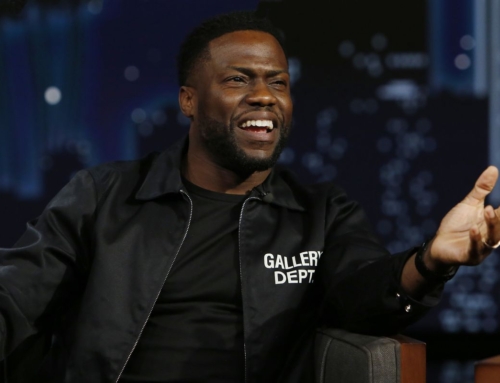
When you look at the presentation of large-scale music festivals and club shows, visuals, you might say, are the best and the worst things that ever happened to electronic dance music.
On one hand, the flashing colors and graphics merge to create a dazzling palette, with the music enhancing that experience further. The beat thumps, the synths sizzle, and the lights look like something out of a candy commercial, only projected on a far greater scale and repeated so many times.
As much as many fans romanticize the “old” days of electronic music, of DJs behind a booth that no one could see, with the sounds as the only force goading you move, the actual live execution – be it of a DJ standing behind his equipment or a keyboardist touching a bunch of buttons – is best captured on carefully-filmed video only.
Notice, as a testament to the early days of electronic dance music, the video for New Order’s “The Perfect Kiss.” Seldom is a shot in its entire 10 minutes of the full group; instead, the camera pans over to Gillian Gilbert turning the knob on a sequencer, or Stephen Morris touching buttons on his synth for some samples of frog sounds. Save for Peter Hook’s rocking back and forth as he does the track’s well-known C-major scale bass line, the video paints the remaining three members of New Order as a group of ordinary-looking button pushers: The type of people you wouldn’t even notice walking down the street doing what amounts to a visually-mundane task.
On the other hand, “The Perfect Kiss,” at least from a sonic perspective, remains one of New Order’s strongest, most emotional tracks in their back catalog. Whether the experimental nature, of a track in which frog samples, cow bells, and arpeggiated synths all coexist, Bernard Sumner’s strained voice singing lyrics supposedly about the AIDS crisis, or the organic character of Hook’s bass perfectly blending with a barrage of mechanical sounds, the overall intent strays far from the pervasive “drop the bass!” nonsense of many modern-day, mainstream EDM tracks.
But if sounds were turned off during “The Perfect Kiss,” there’s a good chance the listener would consider it more akin to listening to the artsy repetitiveness of a Phillip Glass composition. A recent study published in the Proceedings of the National Academy of the Sciences confirms what many attending electronic dance music shows, be it for New Order or Skrillex, already know: Visuals play a significant part in how people perceive the music.

Of course, visuals – within the realm of EDM and not the study’s classical focus – range from performance techniques to the actual visuals projected on a screen behind the stage. This likely explains why “The Perfect Kiss” video focuses more on fingers and hands than the full picture and why producers like Zedd and Above & Beyond have started trotting out instruments during live sets. Not only does this seemingly legitimize the music, but it adds actual movement.
The study published August 19, conducted by social psychologist Chia-Jung Tsay who has a background in performing classical music, involved seven parts. While the first determined the qualities of music communicated through visuals, such as creativity, expression, and motivation, the remaining parts had 103 professional musicians and 106 novices evaluate six-second video clips of the top three finalists of 10 elite piano competitions through listening to the audio, watching only the visuals, or observing the audio and video together.
Tsay found – and, in the world of EDM, this isn’t surprising, really – that through only looking at the visual clips, the professionals and novices equally picked the winners from each competition half of the time. This was less so with the audio only and audio and visuals together.
Tsay followed up these findings by having 262 participants identify passion, creativity, and other musical qualities through sound- or video-only clips. Participants observing the visual-only clips were more likely to identify the competition’s winner than through listening to the audio.
While Tsay, in a statement, said, “Choices based on audio alone didn’t align with the actual winners, because actual winners had been chosen by visual means,” others, like the author of this Hypebot.com piece, look at it from a different perspective: Every appearance, from the clothing you wear to what you do on stage, is a chance to make a fan.
On the other hand, this is somewhat easier for animated rock stars, assuming they aren’t shoegazers, or pop stars, specifically ones that have choreography and don’t just languidly twirl on stage like Lana Del Rey. For electronic music, regardless of quality, you create a spectacle.
In the 1990s, this meant bringing a ton of gear on stage and creating something resembling Daft Punk’s pyramid set up. Or, in the case of the Pet Shop Boys, a stage show becomes, according to a recent concert review in The Quietus, a “modernist art spectacle,” in which the two “seemingly turned hiding in plain sight into an art form.”

Even with mid’80s hits like “West End Girls” and “Opportunities (Let’s Make Lots of Money),” Neil Tennant and Chris Lowe didn’t actually do a full tour until 1989; stage shows from that time being up to the present feature backup dancers, sets, costume changes, and laser lights.
All of this, of course, basically covers up the fact that the Pet Shop Boys, classic synthpop songs aside, consist of two men standing in place – one behind a microphone and the other by a few keyboards and a laptop.
The visuals, as Tsay’s study shows, are designed to create a connection between the audience and the performer, to help identify common emotions rather than guess based on an audio track. But does it actually work?
Leave it to the critics to determine that. The Telegraph’s Neil McCormack, for instance, described one of their performances as: “
Even if you consider the Pet Shop Boys more high art than Swedish House Mafia, McCormack’s statement is almost a sober testament to the buffoonery of visuals in electronic music: A great distraction that doesn’t replace the music’s quality, or lack of.
But what essentially started as making the Pet Shop Boys more interesting has transformed into laser light shows that, likely compounded with some club drugs, turn Swedish House Mafia and David Guetta into all-encompassing sensory experiences of visuals, sounds, and physical sensations along the spectrum of euphoria.
 In talking about a Flying Lotus concert, YourEDM.com asserts that visuals are just as important at the music at EDM shows, but perhaps a bit more articulately, Dave Wexler, a VJ going by the name of Strangeloop who creates the visuals for these shows, explained to Forbes earlier in August 2013 that the graphics and flashing lights give off a rock star aura: “It’s like being a rockstar without being a rockstar at all.”
In talking about a Flying Lotus concert, YourEDM.com asserts that visuals are just as important at the music at EDM shows, but perhaps a bit more articulately, Dave Wexler, a VJ going by the name of Strangeloop who creates the visuals for these shows, explained to Forbes earlier in August 2013 that the graphics and flashing lights give off a rock star aura: “It’s like being a rockstar without being a rockstar at all.”
Unfortunately, as Wexler’s quote implies, there are likely DJs getting the rock star treatment who likely don’t deserve it.
But live performance with electronic dance music is a conundrum. On one hand, as VJ Vello Virkhaus describes to L.A. Magazine, a visual-free show now turns DJs into guys behind a laptop and controller, or with them, you get an overpriced spectacle of canned setlists and a bunch of flashing lights.
What’s your take on visuals at electronic dance music shows – a must or a distraction that drives up ticket prices and makes DJs seem better than they actually are?





